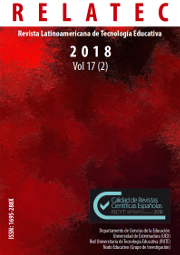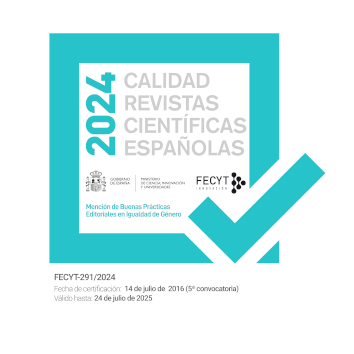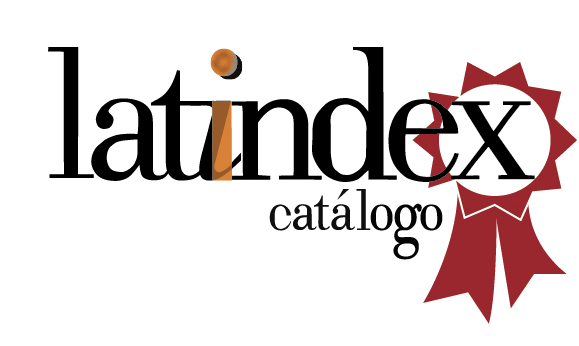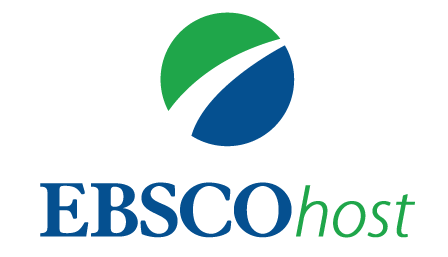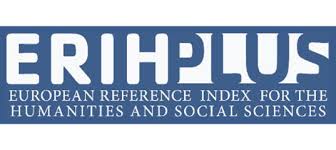Análisis del impacto de los talleres formativos desarrollados por el FabLab de la Universidad Estatal a Distancia (UNED) de Costa Rica
DOI:
https://doi.org/10.17398/1695-288X.17.2.117Palabras clave:
Alfabetización tecnológica, Métodos de enseñanza, Empoderamiento, Construccionismo, Tecnologías abiertasResumen
El rápido desarrollo tecnológico-industrial, ha puesto de relieve la necesidad de una alfabetización tecnológica que permita a las personas entender, manipular y realizar creaciones físicas o digitales. En el presente trabajo se evalúa un modelo formativo probado en el laboratorio de fabricación Fab Lab Kä Träre de la UNED de Costa Rica. Se desarrollaron diez talleres formativos en el uso de tecnologías abiertas, con un total de 106 participantes totalmente noveles. En todos ellos se siguió una propuesta metodológica construccionista ligada a los manifiestos makers. Para la evaluación de la incidencia de los talleres, se utilizó un análisis semántico de una pregunta abierta que se realizó al final de cada taller. Los resultados muestran que más del 70% de las personas participantes fueron capaces de imaginar nuevas aplicaciones adecuadas a su entorno de interés, usando las tecnologías abiertas utilizadas en los talleres. No obstante, solo un 32% indicó cómo sería el desarrollo de lo propuesto. Considerando que cada grupo participó en un único taller, se concluye que el modelo formativo es válido, pero se observa la necesidad de otros talleres de profundización que permitieran abordar los desarrollos propuestos por las personas participantes. Este tipo de propuestas, no solo serían extensibles a centros educativos, sino que también podrían desarrollarse en ámbitos educativos no formales, facilitando el empoderamiento tecnológico de las personas que ya no estén en edad escolar.
Descargas
Referencias
Ananiadou, K., & Claro, M. (2009). 21st Century Skills and Competences for New Millennium Learners in OECD Countries. OECD Education Working Papers, 41. doi:10.1787/218525261154
Blikstein, P. (2013). Digital fabrication and ‘making’in education: The democratization of invention. En J. Walter-Herrmann & C. Büching, FabLabs: Of machines, makers and inventors (pp. 203-222). Bielefeld: Transcript Publishers. Recuperado a partir de https://tltl.stanford.edu/sites/default/files/files/documents/publications/2013.Book-B.Digital.pdf
Blikstein, P. (2015). Computationally Enhanced Toolkits for Children: Historical Review and a Framework for Future Design. Foundations and Trends in Human–Computer Interaction, 9(1), 1-68. doi:10.1561/1100000057
Boden, M. A. (1998). Creativity and artificial intelligence. Artificial Intelligence, 103(1), 347-356. doi:10.1016/S0004-3702(98)00055-1
Brahms, L. (2014). Making as a learning process: Identifying ans supporting family learning in informal sattings. University of Pittsburgh, Pittsburgh. Recuperado a partir de http://d-scholarship.pitt.edu/21525/1/L_Brahms_etd_2014.pdf
Brennan, K., & Resnick, M. (2012). New frameworks for studying and assessing the development of computational thinking (pp. 1-25). Presentado en Proceedings of the American Educational Research Association (AERA) annual conference, Vancouver. Recuperado a partir de https://web.media.mit.edu/~kbrennan/files/Brennan_Resnick_aera2012_ct.pdf
Brynjolfsson, E., & McAfee, A. (2011). Race against the machine: how the digital revolution is accelerating innovation, driving productivity, and irreversibly transforming employment and the economy. Lexington, Mass: Digital Frontier Press.
Bulman, G., & Fairlie, R. (2016). Technology and Education: Computers, Software, and the Internet (p. 67). Cambridge, MA: National Bureau of Economic Research. Recuperado a partir de http://www.nber.org/papers/w22237.pdf
Burnett, D. (2016). El cerebro idiota: un neurocientífico nos explica las imperfecciones de nuestra materia gris. Barcelona: Editorial Planeta.
Bustillo, J., & Garaizar, P. (2016). Using Scratch to foster creativity behind bars: Two positive experiences in jail. Thinking Skills and Creativity, 19, 60-72. doi:10.1016/j.tsc.2015.08.003
Dietrich, A. (2004). The cognitive neuroscience of creativity. Psychonomic Bulletin & Review, 11(6), 1011-1026. doi:10.3758/BF03196731
Dougherty, D. (2013). The Maker Mindset. En M. Honey & D. E. Kanter (Eds.), Design, Make, Play: Growing the Next Generation of STEM Innovators (pp. 7-11). New York: Routledge.
Dweck, C. S. (2008). Mindset: the new psychology of success. New York: Ballantine Books.
Eden, B. L. (2016). Makerspaces: A Practical Guide for Librarians. Journal of Electronic Resources Librarianship, 28(3), 217-217. doi:10.1080/1941126X.2016.1203185
Ferreiro, E. (2011). Alfabetización digital: ¿De qué estamos hablando? Educação e Pesquisa, 37(2), 423-438. doi:10.1590/S1517-97022011000200014
Fourie, I., & Meyer, A. (2015). What to make of makerspaces: Tools and DIY only or is there an interconnected information resources space? Library Hi Tech, 33(4), 519-525. doi:10.1108/LHT-09-2015-0092
Gallagher, L., Michalchik, V., & Emery, D. K. (2010). Assessing Youth Impact of the Computer Clubhouse Network. Menlo Park, CA: SRI International. Recuperado a partir de http://www.computerclubhouse.org/sites/default/files/ICCN%20Youth%20Impact%20Survey%20May-2010.pdf
Hofstadter, D. R. (2001). Analogy as the core of cognition. En The analogical mind: Perspectives from cognitive science (pp. 499-538). Cambridge, Massachusetts: MIT Press.
Hofstadter, D. R., & Sander, E. (2013). Surfaces and essences: analogy as the fuel and fire of thinking. New York: Basic Books.
Kafai, Y., Peppler, K. A., & Chapman, R. N. (2009). The Computer Clubhouse : constructionism and creativity in youth communities. New York: Teachers College Press.
Kaufman, J. C., & Beghetto, R. A. (2009). Beyond big and little: The four c model of creativity. Review of General Psychology, 13(1), 1-12. doi:10.1037/a0013688
Litts, B. K. (2015). Making learning: Makerspaces as learning environments. University of Wisconsin-Madison, Wisconsin. Recuperado a partir de http://www.informalscience.org/sites/default/files/Litts_2015_Dissertation_Published.pdf
Miller, K., Champion, E., Summers, L., Lugmayr, A., & Clarke, M. (2018). The Role of Responsive Library Makerspaces in Supporting Informal Learning in the Digital Humanities. En Digital Humanities, Libraries, and Partnerships (pp. 91-105). Elsevier. doi:10.1016/B978-0-08-102023-4.00007-0
Moorefield-Lang, M. H. (2014). Makers in the library: case studies of 3D printers and maker spaces in library settings. Library Hi Tech, 32(4), 583-593. doi:10.1108/LHT-06-2014-0056
Oates, A. (2015). Evidences of learning in an art museum makerspace. University of Washington, Washington, D.C. Recuperado a partir de https://digital.lib.washington.edu/researchworks/bitstream/handle/1773/33432/Oates_washington_0250O_14523.pdf?sequence=1&isAllowed=y
OCDE. (2010). Educación hoy: la perspectiva de la OCDE. México, D.F.: OCDE : INITE.
Okpala, H. N. (2016). Making a makerspace case for academic libraries in Nigeria. New Library World, 117(9/10), 568-586. doi:10.1108/NLW-05-2016-0038
Olivan, R. (2016). La Cuarta Revolución Industrial, un relato desde el materialismo cultural. URBS. Revista de Estudios Urbanos y Ciencias Sociales, 6(2), 101-111.
Peppler, K. A., Halverson, E., & Kafai, Y. B. (2016). Makeology. (Vol. 1). New York: Routledge. Recuperado a partir de http://public.eblib.com/choice/publicfullrecord.aspx?p=4530683
Resnick, M. (2007). Sowing the seeds for a more creative society. Learning and Leading with Technology, 35(4), 18-22. doi:10.1145/1518701.2167142
Resnick, M., & Rusk, N. (1996). The Computer Clubhouse: Preparing for life in a digital world. IBM Systems Journal, 35(3.4), 431-439. doi:10.1147/sj.353.0431
Resnick, M., Rusk, N., & Cooke, S. (1999). The Computer Clubhouse: Technological Fluency in the Inner City. En D. Carnegie, B. Sanyal, & W. Mitchell (Eds.), High technology and low-income communities: prospects for the positive use of advanced information technology (pp. 263-286). Cambridge, MA: MIT Press.
Rosenberg, R. S. (1992). The social impact of computers. London: Academic Press Limited. Recuperado a partir de http://public.eblib.com/choice/publicfullrecord.aspx?p=1875218
Sadler, J., Shluzas, L., & Blikstein, P. (2016). Building blocks in creative computing: modularity increases the probability of prototyping novel ideas. International Journal of Design Creativity and Innovation, 5(3-4), 168-184. doi:10.1080/21650349.2015.1136796
Schwarz, N. (1999). Self-reports: How the questions shape the answers. American Psychologist, 54(2), 93-105. doi:10.1037//0003-066X.54.2.93
Secretaría General Iberoamericana. XXIII Cumbre Iberoamericana de Jefes de Estado y de Gobierno (2013). Panamá. Recuperado a partir de https://www.segib.org/wp-content/uploads/DECLARACI%C3%93N%20DE%20PANAM%C3%81-XXIII-E.pdf
Selby, C., & Woollard, J. (2013). Computational thinking: the developing definition. Presentado en ITiCSE Conference, University of Kent. Recuperado a partir de http://eprints.soton.ac.uk/356481/7/Selby_Woollard_bg_soton_eprints.pdf
Sheridan, K., Halverson, E. R., Litts, B., Brahms, L., Jacobs-Priebe, L., & Owens, T. (2014). Learning in the Making: A Comparative Case Study of Three Makerspaces. Harvard Educational Review, 84(4), 505-531. doi:10.17763/haer.84.4.brr34733723j648u
Sternberg, R. J. (1998). Handbook of creativity. New York: Cambridge University Press.
Sternberg, R. J., Grigorenko, E. L., & Singer, J. L. (2004). Creativity : from potential to realization. Washington, DC: American Psychological Association. Recuperado a partir de http://es.scribd.com/doc/51023358/Creativity-From-Potential-to-Realization
Tesconi, S. (2015). Crear artefactos para generar conocimiento compartido: el modelo de aprendizaje del movimiento" maker" como herramienta de formación del profesorado. Comunicación y pedagogía: Nuevas tecnologías y recursos didácticos, (283), 40-47.
Tierney, P., & Farmer, S. M. (2002). Creative self-efficacy: its potential antecedents and relationship to creative performance. Academy of Management Journal, 45(6), 1137-1148. doi:10.2307/3069429
Vicerrectoría de Investigación de la UNED. (2017, marzo 20). Kä Träre - Espacio para crear [Corporativa]. Recuperado a partir de http://investiga.uned.ac.cr/redinvestigacion/proyectos/laboratorio-de-fabricacion-fablab/
Weisberg, R. W. (1993). Creativity: Beyond the myth of genius. New York: WH Freeman.
Wilson, M., Scalise, K., & Gochyyev, P. (2015). Rethinking ICT literacy: From computer skills to social network settings. Thinking Skills and Creativity, 18, 65-80. doi:10.1016/j.tsc.2015.05.001
Wing, J. M. (2008). Computational thinking and thinking about computing. Philosophical Transactions of the Royal Society A: Mathematical, Physical and Engineering Sciences, 366(1881), 3717-3725. doi:10.1098/rsta.2008.0118
Descargas
Publicado
Número
Sección
Licencia
Los autores/as que publiquen en esta revista aceptan las siguientes condiciones:
1. Los autores/as conservan los derechos de autor y ceden a la revista el derecho de la primera publicación, con el trabajo registrado con la licencia Creative Commons Reconocimiento-NoComercial-SinObraDerivada 4.0 International (CC BY-NC-ND), que permite a terceros utilizar lo publicado siempre que mencionen la autoría del trabajo y a la primera publicación en esta revista.
2. Los autores/as pueden realizar otros acuerdos contractuales independientes y adicionales para la distribución no exclusiva de la versión del artículo publicado en esta revista (p. ej., incluirlo en un repositorio institucional o publicarlo en un libro) siempre que indiquen claramente que el trabajo se publicó por primera vez en esta revista.
3. Se permite y recomienda a los autores/as a publicar su trabajo en Internet (por ejemplo en páginas institucionales o personales) antes y durante el proceso de revisión y publicación, ya que puede conducir a intercambios productivos y a una mayor y más rápida difusión del trabajo publicado (vea The Effect of Open Access).

